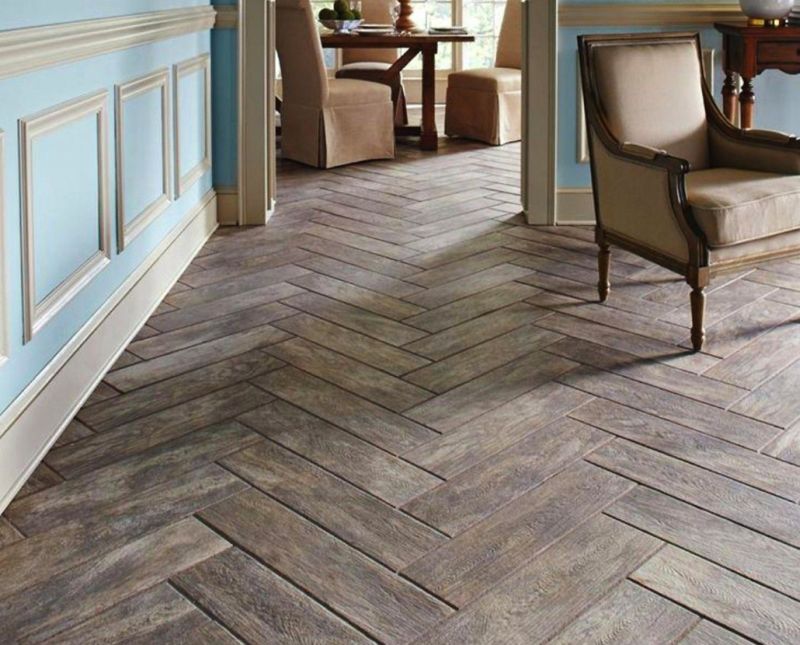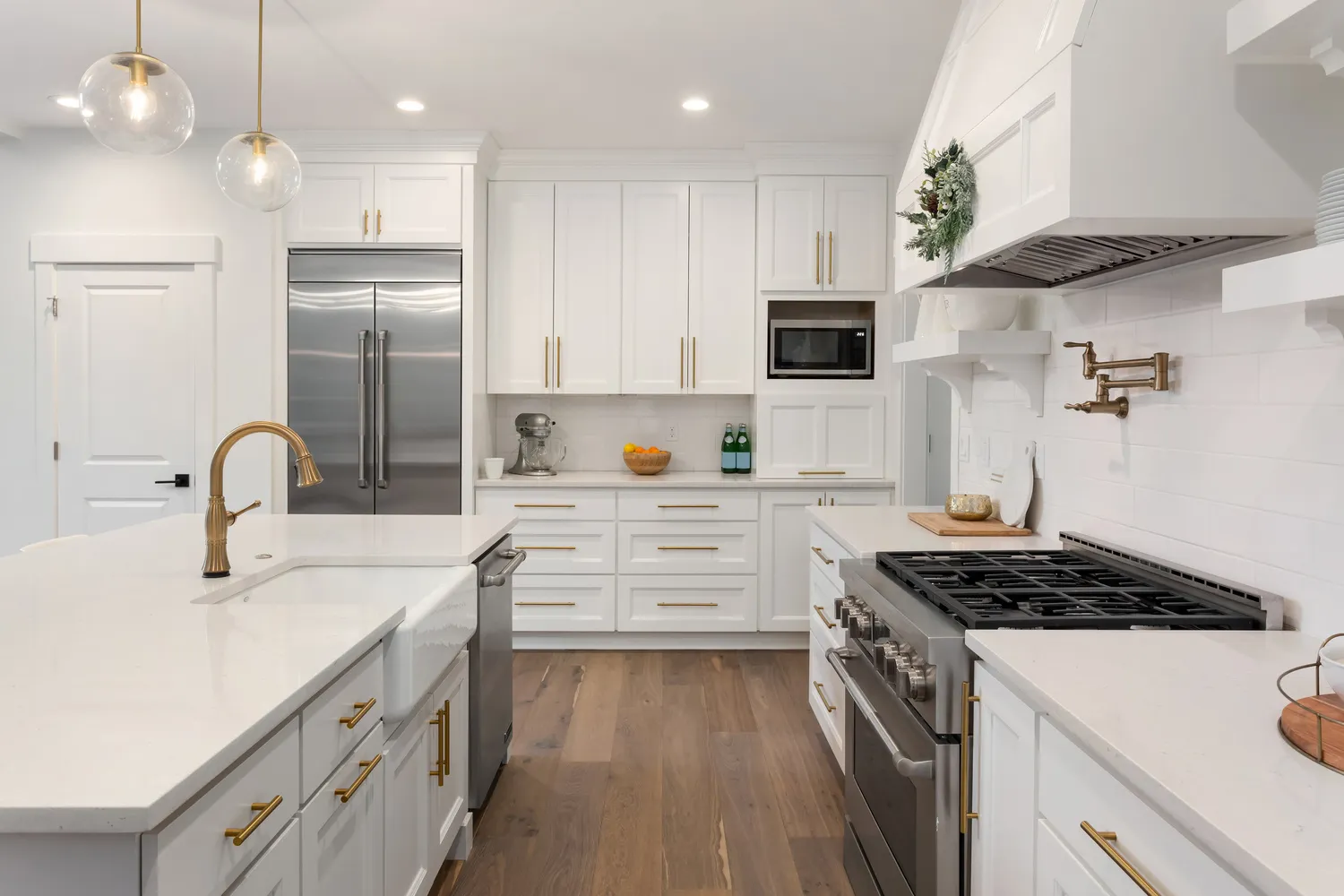
April 9, 2020
Flooring Unveiled: Your Ultimate Guide to Choosing the Perfect Surface!
Laying out a new floor or doing floor remodeling in Chicago area is never an easy task. It requires a good budget and skilled labor work to get it done efficiently. Repaint a wall, buying new fixtures, or adding some stylish furniture but replacing an entire floor is a much serious and costlier task. That’s why it’s best to be in touch with the new information out there about flooring options and ideas to carry out the flooring project efficiently.
We know, flooring of a house can be a bit difficult but it does not mean that you need to surrender against your old ratty carpeting or scratched tiles. Nowadays, there are a lot of options available which can be effective and easy to install as well. Like vinyl, ceramic tile, and laminate can be as low as 1$ per square foot but you should not adopt the strategy of picking the cheap one randomly and just hope to get it along with your project. Every flooring type available has some advantages and disadvantages. Which choice you should prefer depends upon the overall look, design, and aesthetic you are trying to achieve for the room.
One type of flooring can be an ideal selection for one room, and a terrible mistake for others. That’s why, do some research on different types of flooring and get an idea about their cost, benefits, and disadvantages. Only this way, you can select a suitable flooring type that fits your space and your budget.
How To Choose Flooring Material?
These are some factors, you should keep in mind while selecting what kind of flooring material you require:
• Family Situation: If you’ve pets or children then spill-proof and scratch-resistant flooring.
• Room: Like in bedroom Carpet or hardwood, etc.
• Budget: You need to figure out what you can afford by looking at your savings/equity.
• Extra Installation Requirement: Some types of flooring will require underlayment material i.e. pad, etc. It will add to your cost.
• Style: Understand the aesthetic of the room then select the floor type which can portray the right feelings.
• Return On Investment (ROI): It usually depends if you want to sell your house. However, quality flooring will cost more resulting in better long term investment.
Some Types Of Flooring:
Each type has certain purposes i.e. hardwood is popular because of its warm and vintage feel but it cannot be an ideal selection in a moist or rough environment. Anyhow, let’s discuss some of the flooring types.
1. Hardwood Floors Chicago
Hardwood or solid wood is a popular choice in the United States because of its warm, simple installation and vintage look. It consists of 0.75 inches thick planks and wooden boards nailed with the underplayed wooden subfloor.
Wood flooring is also available in strips (1.5 – 2.5 inches wide) and planks (4 – 8 inches wide). Some of the wood types such as oak, maple, walnut, Purple Heart and Brazilian cherry are mostly preferred according to the surrounding environment of the installation. However Brazilian cherry and Purple Heart are not that popular anymore and trends are changing more towards grey or darker colors.
Solid wood flooring is available in the market in two ways i.e. Finished and Unfinished. Unfinished wood will need extra finishing after installing adding more cost while factory finished flooring is usually more durable and cost-effective. One thing you should consider is that hardwood flooring requires cutting trees which can result in deforestation if we don’t replace the deficiency with new trees. So you may be contributing to global warming by selecting this type of flooring.
People love this type because it looks great and also easy to clean. You can refinish the scratched surface maximum five times. They can cost you around 3$ – 8$ per square foot typically or maybe up to 14$ per square foot for stylish wood flooring. This kind of flooring is best for fewer traffic rooms, and certainly a terrible choice for those places which are prone to moisture e.g. bathrooms, etc.
2. Ceramic Tiles Floors Chicago
Another option is ceramic tile, which is made from clay and shale in a kiln. It’s available in various kinds of colors, patterns, and shapes. Not all the options available in tiles are for flooring, i.e. some tiles cannot be used for walls because they have less strength than floor tiles. Four types of ceramic tiles are available.
• Quarry Tile: Unglazed rough texture of this tile makes it very slip-resistant. One disadvantage is, you may find a variety of colors available in this type.
• Porcelain: This tile is extra hard and durable because of its very high-temperature manufacturing. Both available glazed and unglazed types are stain-resistant. Which makes them good for outdoor rooms.
• Glazed Ceramic: This type has a glass-like coating that enables these tiles to have any color or texture. They’re also very hard but less than quarry tiles.
• Terracotta: This tile has a very certain kind of use because of its less durability. It requires regular sealing to avoid stains.
The best thing about ceramic tiles is they can adapt any natural look or even wood which makes them the most considerable choice. Plus, with the advancement in technology, it is possible to print any pattern virtually. Isn’t it amazing to have unlimited kinds of options that can fit with any style of your home? Porcelain tile is available in many colors and this type is very durable against scratches, dents, and moisture. This makes them the most suitable choice for moist and high-traffic areas such as kitchen and washrooms.
On the contrary, they have very hard feet, become incredibly cold in winters, and make louder noise while walking. Glazed tiles are slippery without non-slip coating. Plus, you need to maintain sealing between tiles regularly and it can be hard to fix if it gets cracked. The cost of this type of flooring varies widely, i.e. it can be cheap as low as 1$ per square foot and costly as high as 100$ per square foot because of the available styles and sizes. The average cost including labor is usually equal to 3$ to12$ per foot.
3. Carpet Floors:
Carpet is the best and most favorite flooring selection for bedrooms and living areas. It is installed by nailing down over the layer of padding. It’s also available in a wide range of colors, materials, and texture. Carpet is installed wall-to-wall with padding which improves its lifetime of usage. Carpet thickness and fiber density vary from type to type. It is best to buy a high-density carpet because they tend to be more durable.
Some of the reasons people like carpet so much because they give the feeling of warmth and softness underfoot. You don’t need to be afraid all the time to slip while walking on a carpet. You should use carpet in most appropriate spaces such as bedrooms and living rooms. Polypropylene carpets can be installed outdoors because they’re moisture resistant. Carpets are easy to install but keeping your carpet clean can be really a continuous headache. You need to vacuum them regularly and take extra care especially if you have children. Plus, they can be bad for you if you have allergies like pollen or pet staining that can really get you.
Carpeting costs including padding and installation can vary from 4$ to 15$ which makes them less expensive than solid wood flooring.
4. Vinyl Floors:
Vinyl is the most resilient type of flooring. It feels softer underfoot because of its flexible material. Vinyl flooring consists of polyvinyl chloride (PVC) with different kinds of under layers. These additional under layers make the vinyl flooring more comfortable to walk and have texture to look like wood or stone.
Vinyl is a flexible yet tough material which makes it moisture resistant and best suitable for heavy traffic. Plus, you can walk comfortably on it even in winter because of its warmer feel than tiles. Vinyl is an inexpensive option costing only in-between 1$ to 5$ per square foot. Unfortunately, vinyl is bad for the environment because it consists of PVC (a major source of “phthalates”). And if you’ll not install under layer then it will produce terrible sound while walking on it. You should install vinyl in high traffic rooms e.g. mudrooms, kitchen, or bathrooms as well. Basement is the best location for installing vinyl because it can help you to resist moisture and bear rough routines.
5. Laminate Floors:
The best way to describe laminate flooring is it is a cheaper way to give you wood, stone, or tile-like look. Actually, it is a photographed version of your desired type of flooring (top layer) layered with plywood or compressed fiber. The best part about this flooring is, it comes in a kind of floating system which can be installed over old flooring with glue or nails.
Laminate Flooring is easy to clean and resistant to scratching even better than real wood. Not only it costs less money but also it requires little maintenance. It cannot be refinished, only replaced which may cost more than wood or tile flooring in the long term. The laminate material is easy to install but it can be really slippery when wet. Although laminate material is water-resistant if the water stays on laminate material for a long time, it may get to the underplayed planks, causing real trouble. So you need to make sure to avoid any leakage while installing this type of flooring, otherwise, it can be dangerous without you knowing. That’s why avoid installing it in places which usually stay wet i.e. laundry room and bathrooms.
Laminate is a good selection for high traffic areas especially if you have a low budget. You can get a wood or tile-like look without spending more. You can use laminate in the basement floor if there is no water leakage or water standing problem. Laminate flooring can cost you 1$ t0 8$ per square foot if you install it yourself. Otherwise, the cost will be 4$ to 12$ per square foot because of labor costs.

